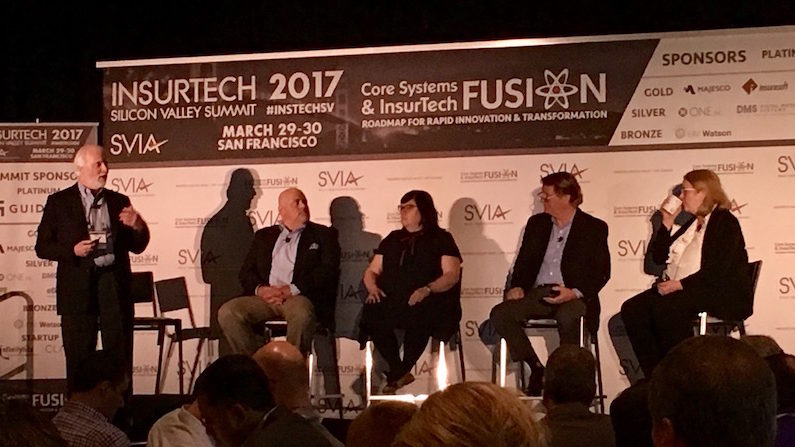
At the end of last month, Cake & Arrow had the honor of attending and speaking at Insurtech Silicon Valley’s 2017 Summit. As an Account Director at Cake & Arrow who leads a variety of digital initiatives with leading global insurance providers, the conference was a great place to connect with others interested in digital transformation within the industry and glean some valuable insights into where the industry is headed and how the work we do at Cake & Arrow fits in.
The theme of the conference was Core Systems and Insurtech Fusion: Roadmap for Rapid Innovation and Transformation and featured a range of speakers, from executives at large legacy carriers undergoing a digital transformation of their own to the founders of small insurtechs looking to disrupt the industry. The conference brought together insurtechs and carriers and was intended to help them explore how they can work together to transform the industry. Below are some of the key takeaways from the two-day event.
“Don’t create today’s system on tomorrow’s platform.”
Technology investment pays off – but only when carriers invest in the right technology. In his opening keynote on day one of the conference, Eugene Lee, Vice President of Data and Analytics at Guidewire, shared data from McKinsey showing that insurers in the top quartile of technology investment are growing twice as fast as their less advanced peers, and are delivering better profitability.
But technology investment isn’t the whole story. In fact, as discussed by Prashanth Ajjampur, Principal at Deloitte Consulting, most large scale IT projects still fail (70%), and according to one presentation, in 2016, only 89 million dollars was invested in new tech, compared with billions in old systems. Which is to say that the most successful carriers aren’t just investing in tech, they are investing in the right tech. What does this mean? Well first and foremost, they are changing out their old systems and opting to partner with core systems software providers. Again, according to Ajjampur, “not a single carrier can operate using the legacy system they have.” And while many continue to operate on old systems, most carriers understand that in order to survive and remain competitive, they will have to migrate sooner or later.
“Having a new system does not mean you have transformed your business.”
A new core system is a step in the right direction and has to be done, but it is not the destination. Carriers with the most success are going beyond core systems investment, and are partnering with insurtechs and other technology providers to institute cultural change and integrate their infrastructure and processes to create better experiences for customers.
For example, my colleague Christina Goldschmidt spoke on a panel with one of our clients, a leading global insurance carrier, to discuss how they are in the process of replatforming all of their P&C business lines on Guidewire, and have been working with Cake & Arrow to rapidly innovate, prototype, and user test in order to quickly design and implement more customer-centric products and improve ease of doing business for agents.
Majesco, a core systems software provider, has recently partnered with IBM to “offer cognitive, cloud-based platform to give inusrers the power to develop new customer services that use predictive analytics.” Andrea P. Eichorn of IBM spoke about how Majesco and IBM are partnering to help insurance carriers better understand their customers using AI and other tools, gathering real-time data to provide customers truly unique experiences.
“People will share information if you use it respectfully and effectively”
One of the most exciting things discussed at the conference was the amazing ways insurance carriers are using data to solve problems in the market and deliver on experience. In his keynote, the CEO of Lemonade, Daniel Schreiber discussed how Lemonade used research on human behavior to create a different kind of relationship with consumers. According to their research, 25% of Americans think it is ok to defraud insurance companies. Using this data point, they built their business model upon the idea of creating trust between consumers and carriers, because when consumers trust a company, they are more willing to give them their data, which in turn can be used to personalize experiences and create loyalty (think Google). Lemonade developed a model for what they refer to as the “virtue cycle”–a cycle that starts with trust, and provides ways for consumers to freely hand over information in exchange for better experiences and outcomes. It is a lesson that legacy insurance carriers must learn if they are to remain relevant.
Perhaps the most enduring message from the conference is that without core systems transformation, it will be nearly impossible for insurance carriers to take advantage of all that today’s advancements in technology have to offer. AI, telematics, maching learning–all require insurance carriers to first modernize their systems. The best way for insurance carriers to move forward and compete in the digital age is to quit wasting money on internal IT investment and move to core systems, where truly transformative innovation can finally take foot.
(Watch our full presentation and download our presentation deck here.)